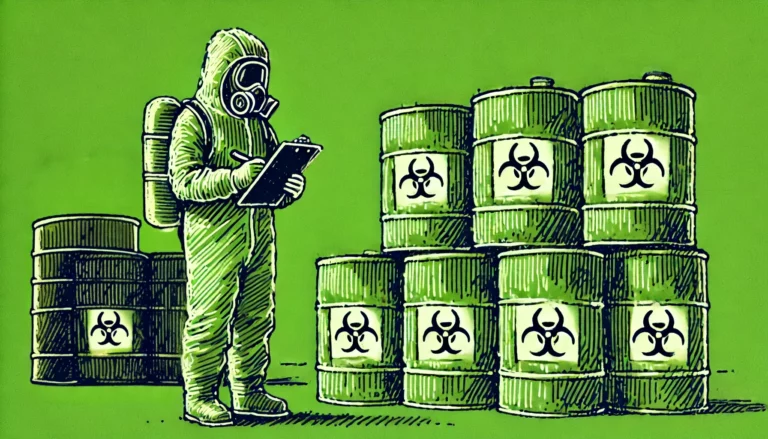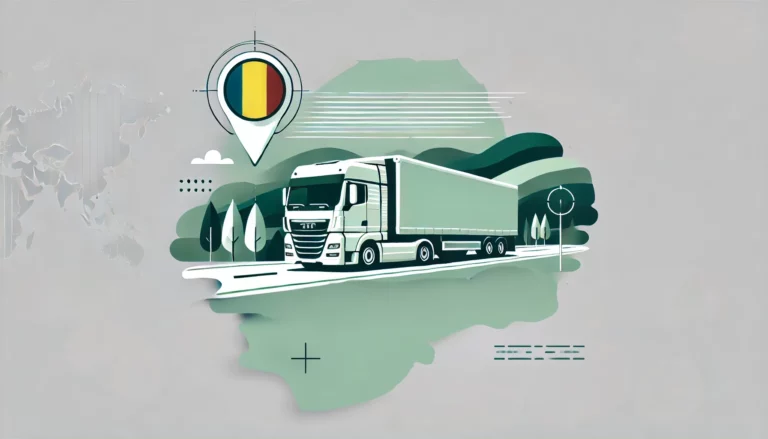How will the driver shortage affect waste transport?

The lack of experienced drivers capable of handling the supply chain in many industries is not a new problem. It was signalled by haulier organisations several years ago. At the time, attempts were made to plug the gaps by hiring drivers from across the eastern border. However, this was a temporary solution, as the problem is growing again. How will it affect (or is it already affecting) the waste industry? And what measures are being taken to rectify the situation?
The post-Brexit landscape
When the UK left the European Union at the end of January 2020, islanders did not realise the problem they would face. Labour migrants working there had to return to their home countries, and when they did, the local economy was hit hard. For it turned out that the islanders relied so much on foreign workers that when they were gone, the economy virtually came to a standstill. It was no different for lorry drivers.
The problem of vacancies in the transport sector has existed beforebut the sudden outflow of large numbers of migrants meant that the British had to take drastic measures. Since there was no one to bring goods to factories or shops, there were no sales. Since there were no sales - the state did not generate profits. The situation was so critical that a plan was devised to employ refugees as drivers. However, it met with public discontent.
Europe at the threshold of the crisis
Statistics don't lie
The situation on the islands was not isolated. A shortage of drivers was, and still is, faced by many European countries. In 2021, the International Road Transport Union (IRU) signalled that there is a shortage of nearly 400,000 drivers in Europe.
Representatives of the European transport industry, interviewed by IRU analysts at the time, listed several reasons for such a large deficit. The most common reasons, in their view, were:
- lack of qualified drivers (46% of respondents)
- difficulties in getting young people interested in the driving profession (45% of respondents)
- unfavourable image of the lorry driver (38% of respondents)
- difficult working conditions (32% of those asked)
- Problems with attracting women to the profession (19% respondents)
In 2023, the situation has improved slightly, but reports still indicate over 230,000 vacancies in the transport sector. At the time, it was projected that this number could almost triple by 2028 when currently employed drivers retire. It was pointed out that the average age of a lorry driver is 43-47, with a third of them having reached this upper limit.
Steps taken
Seeing what was happening in the UK, the authorities in other European countries decided to act. The situation in Germany was saved by migrants, who by 2020 already accounted for one quarter of all drivers employed at the time. The Cologne Economic Research Institute points out that if it were not for the support of drivers from abroad, the situation would be much more serious. Currently, there is still a shortage of nearly 100,000 drivers in Germany.
Polish Road Transport Institute, referring to IRU data, pointed out that 2022 was the most difficult year in Europe for our transport companies. At that time, we had a shortage of up to 80,000 drivers. In order to fill the gaps, Polish companies were also keen to recruit drivers from abroad, with Ukrainian nationals being the most commonly employed. Currently, 30,000 drivers still needed.
How are other countries dealing with this problem?
The teleroute.com portal presented what action other countries have taken in 2023 to combat the driver shortage:
- France spent more than half a million euros on an aid package to train new drivers.
- Belgium has launched a special fund to enable free C+E driving courses. Previously, this scheme covered school leavers, but now it is open to all
- The Netherlands has decided to increase drivers' pay. Negotiations with union representatives resulted in a wage increase of 5% from January 2023.
- The UK government has given £8 million to operators of roadside parking facilities to upgrade truck stops. It has also allowed drivers to work 11 hours a day twice a week instead of the previous eight.
- Italy has set its sights on discounts for under-35s applying for a C+E driving licence. With special vouchers, up to €2,500 in discounts can be secured.
- Spain decided to recruit Moroccan truck drivers. It also offered a €600 allowance to anyone who wanted to purchase a truck.
- Portugal has banned drivers from taking part in the loading and unloading of goods. Instead, they must wait in designated areas.

Driver shortage and its impact on waste transport
Transport of waste plays a key role in waste management and supports a circular economy. It too is affected by the shortage of drivers. There is a greater demand for waste transport as more and more waste is generated. It has also introduced stricter regulations concerning waste management. This makes the demand for haulage services in this sector constantly increasing. However, the problem arises when haulage companies do not have enough staff to meet this demand.
The driver shortage reduces the number of available trucks on the market, leading to:
- Increase in waste transport costs - Reduced supply of haulage services results in higher prices. Haulage companies have to raise rates to compensate for increased operating costs and more pressure on their staff. Higher waste transport prices can also reduce environmental performance. Some companies, struggling with rising costs, may opt for less costly but less sustainable ways of managing waste. As a result, this may result in less waste going to recycling and more going to incinerators or landfills, negatively impacting the environment.
- Lack of sufficient capacity - Despite increasing demand for transport services, companies are unable to deliver adequate volumes. Hauliers have to refuse additional orders, which affects their ability to provide services and can lead to a loss of customers. As a result, waste may remain at landfill sites for longer, increasing the risk of environmental hazards. In some cases, there may even be an accumulation of waste that cannot be collected in time and transported to its final destinations, such as recycling facilities
Waste transport - the search for solutions
Addressing the driver shortage in Europe requires a comprehensive approach. Here are some possible actions to mitigate the crisis:
- Automation and use of modern technology - The development of autonomous trucks could help reduce the need for drivers in the future. It may also provide an answer to staff shortages. In the waste transport sector, the automation of logistics processes and better data management can contribute to a more efficient use of available resources.
- Improving working conditions and training for new drivers - No longer just higher wages and flexible working hours. There is a need for more comprehensive solutions that safeguard the driver, their health and enable their development.
- Increasing international cooperation - Driver shortage problems are a common denominator for many European countries. Cooperation at EU level can help to create common training programmes and facilitate the migration of workers between countries to fill the shortage.
Waste transport - forecasts
The driver shortage in Europe is having a negative impact on waste transport. Increased freight prices, capacity constraints and logistical bottlenecks are just some of the problems faced by waste haulage companies. The disruption to the supply chain also has its environmental consequences. More waste also lingers in warehouses or in landfills (including illegal ones). In order to address this challenge, long-term action is needed to help mitigate the effects of this crisis.






